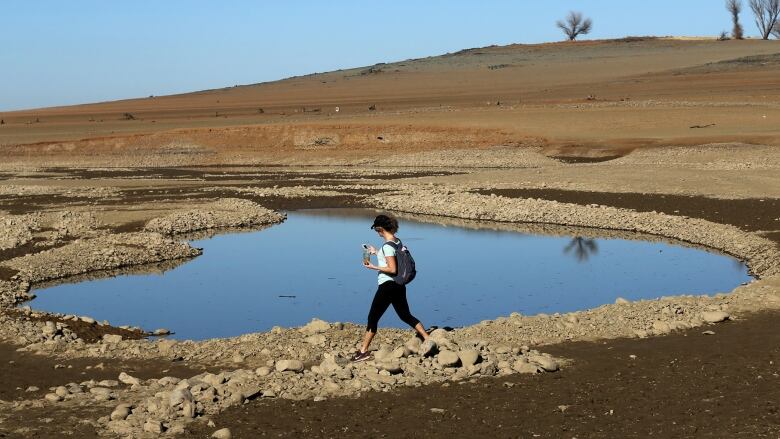California drought to squeeze produce prices, but so will other factors
Price of lettuce has gone up 40 cents, but some of that is due to low Canadian dollar

Drought may have gripped California's agricultural heartland for a fourth consecutive year, but it's not the only factor putting pressure on imported produce prices at the supermarket.
More than 93 per cent of the state is currently experiencing "severe" to "exceptional" drought, according to theU.S. Drought Monitor, and thegovernorrecently implemented new rationing measures for cities and towns to cut wateruse by 25 per cent.

John Bishop, aproducebuyer for distributor Fresh Start Foods in Milton, Ont. says his Californiantomatosuppliers are planning for a smallercrop this June.
- California imposes water restrictions
- Cost of fruit and veg rising due to drought
- PHOTOS: California's drought hits livestock
"They havetold me that they are reducing their acreage by 20 per cent because they don't have enough water to be ableto continue to grow the way they've grown in the past," he said.
Canadian food from California

- 84per cent of broccoli and cauliflower.
- 76 per centof fresh strawberries.
- 68 per cent of lettuce.
- 69 per cent ofcarrots, turnips and other root vegetables.
- 89per cent of almonds.
Prices of some of those productshaveincreased in the past year, but it's hard to draw a clear line between those increases and the drought, sayBishop and others.
Between February 2014 and February 2015prices rose 3.5 per cent for fresh fruits and 8.4 per cent for fresh vegetables compared with overall inflation of 2.1 per cent.
Lettuceprices have jumped about 40 per cent in that period. Part of that is likely due to the shift Californian farmers have made from so-called row crops, such as lettuce, carrots and tomatoes,to higher-value perennialcrops like nuts and wine grapes. But it's hardto separatethe effects of the droughtfrom other factors that affect retail prices, such as:
- Fuel prices, which havebeenfalling and made transport cheaper.
- The low Canadiandollar, which has made U.S. produce more expensive.
- Other weather events, such as frost.
- Labour disruptions, such as the farm workersstrike in Mexico, where some produce comes from in winter, and wage pressures.
"Periods of drought often get exaggerated in terms of their impacts on retail food prices," said RichardBarichello, professor of food and resource economics at the University of British Columbia. "The larger likely effect is to shift land away from producing hay and livestock feed and more into valuable crops."
California'salmond production, for example, increased to record levels last year, despite the drought.
No substitutefor fruit and veg
The University of Guelph's Food Institute estimatesthe price of fruits and nuts will go up between one and three per cent in 2015while vegetable priceswillincreases bythree to five per cent.
SylvainCharlebois, lead author of the forecast, says if California produce gets too expensive,Canadian grocers will have to find a cheaper alternative because unlike meat, which can be substituted with other food that providesprotein like eggs or fish, fruits and vegetables "have no substitutes."
And although locally grown produce is finding a foothold in some grocery chains, it couldnever make up the volume of lost Californian imports.
Search for new suppliers is on

Charlebois said Canadian produce importers and especially those who bring inorganicproducts have been feeling the effects of the drought for the last 18 months,butBishopsaidit'll be the next eight months that will be criticalas California enters the dry season and the agriculturalproduction cycle moves north fromYuma,Ariz., where some of our vegetables come from inwinter,to California's Central Valley andSalinasregions.
It's the Central Valleythat has been hardest hit by the drought.
Bishop says that although he doesn't consider his California producesupply under serious threat just yet,he has started scouting otherpotential suppliers lookingas far afieldasArgentina, Australia and South Africa.
But few contenders canmatchCalifornia's fertile micro-climate, extensive agricultural infrastructure and proximity, especially when it comes tocropslike lettuce, broccoli and cauliflower,Bishop said.
Lemons, for example, "canbe on a boat for a week or 10 days and they're fine." But lettuce, he says, "has to be harvested, cooled and used withinsevendays."












_(720p).jpg)


 OFFICIAL HD MUSIC VIDEO.jpg)
.jpg)



























































































